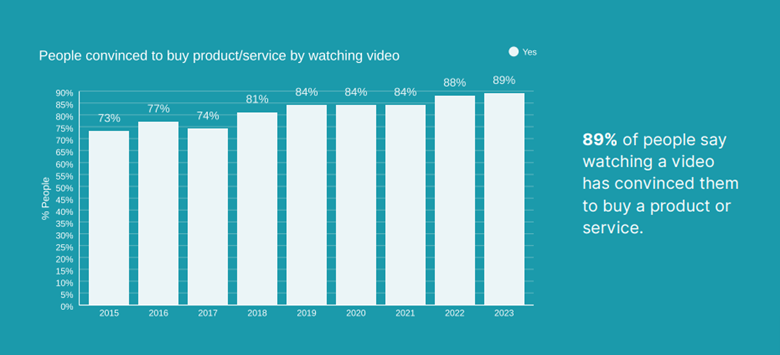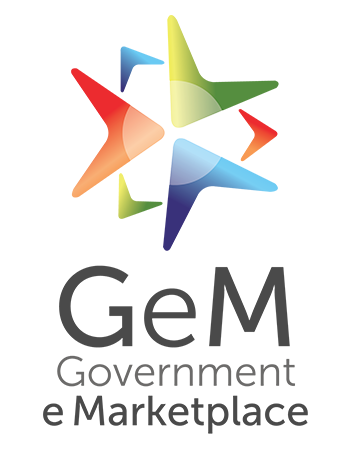Back in the day, the term ‘ marketing’ was associated only with ads in newspapers, magazines, TV, and radio, and billboards and hoardings. Just like our ways of manufacturing products have come a long way, so have our methods of selling them.
With over half the world accessing the internet today, the time we spend watching TV or reading print media has lessened drastically. Instead, most of us prefer to spend more time on the web on our PCs and phones.
E-commerce platforms and online businesses are overwhelming the offline retail market by the very minute. As a direct result, the advertising and marketing industry has also made major direction changes from the offline to the online world.
Selling online has become the order of the day for any business that wants to grow its customer base. To that effect, digital marketing services are becoming increasingly popular among online retailers and service providers of all kinds and sizes.
Digital Marketing – Why You Need It
Digital marketing can be defined as the process of online marketing or promotion of brands through digital channels. It comprises all techniques and aspects of marketing that utilize the internet, i.e. done through the digital world. It includes websites, mobile apps, search engines, emails, blogs, social media, and so on.
Digital marketing is the most potent and cost-efficient way to build online visibility, generate traffic, and convert visitors into customers. Brands all over the globe are investing in getting professional aid to create and maintain their online presence.
The Everlong Landscape of Digital Marketing
While online advertising had already been gaining huge popularity, the COVID-19 pandemic and the subsequent lockdowns changed the scene completely. All of our work, business, and leisure shifted to our phones and computers and the internet became the hub of all human interactions.
The practice of marketing and selling online has skyrocketed ever since. According to a Statista survey, the net global spending on digital advertising is set to go up to a whopping 680 billion USD by the end of 2023.

With increasing relevance and constant innovations, the digital marketing world has spread its influence over several landscapes. They can be classified as:
Marketing Landscape – It involves all the digital techniques and tools that are used to draw users to your product or facility. It includes the usage of social media and other methods like blog posts, services provided by Google, and offline content that can be used to bring in customers.
Social Media Landscape – It includes social platforms like Facebook, YouTube, and Instagram that have a large user base and can be used effectively to generate popularity and interact with customers.
Technology Landscape – This consists of the tools, both hardware, and software, that are used to access the internet and implement marketing techniques.
Media Landscape – The media landscape is made up of the specific sphere of information and news where you are advertising.
Significance of Staying Updated With Trends
The key objective of any business is to get as many customers or clients in through the door as possible. It is virtually impossible to generate leads and drive sales without implementing apt procedures or taking the help of digital marketing services.
It has become integral not only for online advertising professionals but also for business owners, to stay updated with the latest trends and practices of digital marketing.
Digital marketing enables you to:
- Point out and focus on the right audience.
- Connect and engage with customers and gain their trust.
- Generate organic traffic to your online platforms and help to generate leads.
- Nurture these leads and convert them into sales.
- Create an engaging and satisfying UX (User Experience)
- Build your brand’s image and reputation.
- Evaluate your overall marketing performance and make improvements
- Reach both local and global audiences.
- Spend less capital yet ensure better ROI (Return On Investment).
15 Digital Marketing Trends You Need To Be Aware Of
The online marketing industry is evolving at a rapid pace and keeping in touch with the latest developments can become too overbearing a task. However challenging it may sound, your competitors are doing it and you need to, as well.
We are taking a closer look into the most happening additions and modifications the digital marketing scene is undergoing so that you can grasp and make use of them.
Artificial Intelligence (AI)
From customer support bots to self-driving cars, the capabilities and influence of Artificial Intelligence (AI) have come a long way.
AI is already revamping the entire industry by boosting personalization, productivity, self-assessment, and improvement. Hundreds of AI tools have taken the world by storm and are being used effectively for various categories of work.
Owing to its ability to access and process enormous volumes of data and generate relevant results, AI is being used by digital marketers in a number of ways.
Content Creation and Modification
AI-based writing tools are transforming the content marketing scenario by making it much easier and less time-consuming for marketers to generate insightful content and create engaging copies, just by entering prompts.
The most widely used language models and writing tools include:
- ChatGPT
- Google Bard
- Writesonic
- Jasper
- Copy AI
- Rytr
Several businesses are leveraging ChatGPT-based applications to streamline their process of content creation and automating customer services.
There are also tools like Grammarly, WordTune, and Quillbot that are effective in modifying and improving content by correcting grammatical and typing errors and suggesting alternative sentences.
Writing Code
Writing, evaluating, and debugging code has become a lot more effortless, thanks to AI. These coding tools work quite similarly to writing tools. But in place of producing text-based content, they take in prompts in natural language to generate or debug lines of code.
Some of the AI tools that have made a huge impact on web development are:
- GitHub Copilot
- aiXcoder
- TabNine
- Figstak
- SpellBox
- AskCodi
- BlackBox
Virtual Meetings
The COVID-19 pandemic forced us to hold all our meetings and discussions online, and AI completely changed the game. Today, AI-driven tools can convert spoken conversations accurately to text, generate tasks as per recorded discussions, produce analytical figures, and a lot more.
The most effective tools in this field include:
- Spinach
- Sembly
- Fireflies
- Krisp
- Tl;dv
- Otter AI
- Fathom
Image Design
AI-powered image generation is a huge benefit for small businesses and companies that cannot afford hefty sums to produce high-quality pictures and graphics. The leading generative AI models that are used for graphic design and generating images are:
- Midjourney
- DALL-E 2
- BlueWillow
- NightCafe
- Stocking
- Bria
Video Creation
Shooting or generating HD videos is even more expensive and time-consuming than producing images. However, AI has solved this problem to a great extent as well. Today you can generate lifelike and top-notch videos simply by typing prompts into AI video creators in less than a minute.
The most useful AI video tools include:
- Fliki
- Synthesia
- Lumen5
- DeepBrain AI
- Runway
Apart from all these applications, there are numerous other generative AI models that are being efficiently utilized for business analysis, ad campaigns, usability testing, customer support, and sales.
Influencer Marketing
Influencer marketing refers to the act of teaming up with relevant influencers in your brand’s field to promote your products and drive sales.
An influencer can be defined as a person with a large and loyal follower base on social media platforms such as bloggers, YouTubers, short video creators, and so on. They are considered experts in their domains and held in high acclaim by their followers.
They can be distinguished from traditional celebrities by the fact that they are accessible to their fans and followers on social media, and share a constant accord with them.
Based on your marketing goals, you can ally with them to create exciting content, host interactive live sessions, announce new offerings and giveaways, hold live events, and so on. Customers have high regard for influencers and they help to increase both organic traffic to your online platforms and footfall in your retail outlets.
Today, virtually every brand, global or local, is implementing this method in some form or the other.
An apt example of influencer marketing can be observed in Dunkin Donuts’ recent campaign on ‘National Donut Day’. They introduced several new offers and got local influencers from all over the US and Canada to promote them on Instagram and Snapchat.

In this post, food vlogger and influencer @diningwithskyler is promoting Dunkin’ Donuts’ offer of 1 classic donut free on every beverage order. The brand also had her interact with fans and customers who visited certain stores in New York on that day.
We can see that this post alone has around 2.4k likes, and overall, their new follower count on Snapchat and Instagram on that day was 10 times more than that on other days. The initiative reached around 3 million people and 40,000 engagements with customers.
Personalized Marketing
Personalized marketing is the process of using data and analysis to engage with existing customers and target audiences to ensure a more unique user experience. It focuses on user preferences, interests, purchase history, and other factors.
For instance, if your name is Jesse, you are more likely to prefer promotional emails from brands that start with “Hello Jesse” instead of those that go “Hello User” or “Hi Customer”. You are bound to feel a personal touch with the former brand and hence are more likely to check out and even buy its products.
To ensure an effective personalized marketing program you need to compare and collect user data, analyze and put it into facts and figures, and then implement them in your campaign.
Individual-centric marketing can be carried out through targeted emails, customized video messages, social media posts, and messages, recommendations of products, FOMO (Fear Of Missing Out) messages, and so on.
The upsides of this strategy are :
- Enhanced customer and user experience (UX)
- Increase in sales and revenue
- Boost in brand loyalty
- Coherence throughout multiple channels.
Video Content (Short-form and long-form)
Video content marketing is the method of using videos to promote your brand, engage with users, and widen your customer base. A Wyzowl report shows that over 90% of marketers consider video as a key component of their campaigns.
The study also reveals a constant increase in the percentage of people who claim that watching videos have influenced them to purchase a product or service.

The most useful types of content every video marketing agency is using today include brand videos, demos, how-to videos, Q&A sessions, expert reviews, case studies, live event videos, and user-generated videos.
The notable advantages of incorporating video content are:
- Longer hours of customer engagement
- Boost in lead generation and sales
- A higher number of shares
- Increase in email open-rates
- Better rankings on SERPs 9 Search Engine Result Pages
It is also crucial to include short-form videos like TikTok, Instagram Reels, and YouTube Shorts. They resonate massively with young audiences and are easy to take in.
They grab the immediate attention of users and have a very high rate of shares. Moreover, they are a lot cheaper and easier to produce compared to long videos and are highly effective on social media.
Multi-channel Social Media Marketing
With the growing influence of social media, the ways to reach your target audiences have increased manifold. However, choosing what strategy to use for which platform can get tricky.
Social media marketing across platforms involves building a consistent brand tone and identity across all platforms to enhance confidence in the users. By combining various channels, you can reach a larger number of people and maximize revenue.
It requires a strong synergy and correlation among your posts on all platforms like Instagram, Facebook, Youtube, Twitter, Snapchat, Quora, Linkedin, etc. Promotional emails and targeted ads are also to be integrated into the process.
An apt example would be the marketing methods of Under Armour, a sportswear and accessories brand. Instead of trying to directly boost sales in their ads, they follow a rather toned-down approach.
For instance, in this targeted ad, they tell the story of Jonathan Taylor, an American football player who uses Under Armour sports gear.

The brand maintains the same approach in this Facebook video post as well. Here, Eritrean-American long-distance runner Weini Kelati narrates her personal experiences in a motivational monologue.

Once again, in the following Instagram post during Pride Month, UA has Australian soccer player Chloe Logarzo narrate her journey from her struggles for inclusion to becoming a world-beater in her sport.

Along with the inspirational story, there is also a link to the brand’s store, optimally placed. A good percentage of viewers of this post are likely to visit the link and check the products out.
Such a subtle yet coherent marketing strategy ensures that Under Armour maintains a strong bond with sports enthusiasts while also steadily growing its customer base.
LinkedIn Marketing
Although LinkedIn has been around since 2003, its users are growing consistently. Today, the platform has over 400 million active users consisting of working professionals, recruiters, and brand executives.
LinkedIn’s professional drive makes it the ideal channel to generate excellent leads. By actively engaging on LinkedIn, you can keep in touch with the existing clients in your portfolio, while targeting new users as well.
The primary benefits of marketing on LinkedIn are:
Brand Visibility
LinkedIn is the third most widely used social platform in the world and is the top pick of B2B companies and marketers. A well-designed company page or profile on LinkedIn is a huge plus sign for search engine algorithms and improves your rankings.
Rise in Conversions
The increase in online visibility results in more traffic and lead generation. LinkedIn has the highest rate of lead conversions among all social media platforms including Twitter and Facebook.
Effective Recruitment
With a new registration literally every second, LinkedIn is one of the most effective tools for recruiting talent in your organization. Millions of working professionals of all skills and from all fields are active on LinkedIn and you can easily streamline your search for personnel.
Search Engine Optimization (SEO)
Search Engine Optimization (SEO) is a set of integrated methods that are aimed at making a website or page more visible and have a higher rank on search engine result pages.
We hardly ever open the second page during Google searches, as the most valuable and relevant materials are already available on the first (usually the first 10 results).
This is why SEO is so crucial in web development. Your objective should be to make your site rank within these first 10 results, whenever someone makes a search related to your niche.
Today almost all businesses of various sizes and likes have a Search engine optimization company taking care of their online marketing procedures. It ensures the following advantages:
- Improves your search engine performance
- Guarantees organic traffic to your site
- Enhances the conversion of leads to sales
- Enables you to understand customer preferences and pain points
- Ensures an engaging User Experience
- Relatively cheap and more cost-efficient than paid ads
- Enables you to analyze your site’s performance
- Produces scalable results that help you make necessary improvements.
Also read: The 10-step Beginner’s Guide To SEO Audit in 2023
Customer Experience
Digital customer experience (CX) refers to the perception and overall level of satisfaction or discontent a customer has with your brand on the basis of their interactions on all of your digital platforms.
This includes everything from your company website, landing pages, mobile app, social media platforms, email campaigns, customer support portals, targeted ads, and so on.

A well-thought-out digital CX gives you more control over how customers perceive your brand. It also gives you valuable insights into customer behavior, likes, dislikes, and challenges.
According to a FullStory report, over 70% of customers want brands to use new technology in innovative ways to make their digital experience more appealing.
Here are some practices you need to follow in order to ensure a commendable digital CX:
- Identify your target audience
- Mark out their preferences
- Pay attention to analytics
- Conduct usability and performance testing
- Maintain consistency across all channels
- Focus on mobile UX.
Ethics in Digital Marketing
With so much information and data readily available on the go, businesses can create highly targeted action plans to build brand value and drive sales.
However, with great power comes great responsibility; and it is mandatory to ensure that you don’t indulge in unethical and illegal marketing practices.
Customers are constantly demanding transparency and ingenuity in the way brands interact with them online. Failing to meet these expectations leads to customers losing trust and your brand’s image takes a hit.
Moreover, privacy breaches and data infringements can also lead to serious legal issues, causing further loss of time and resources. Some ethical factors you need to keep in mind include:
Content relevance – Avoid using clickbait to tempt users to view content that is unrelated to their requirements, just to score PPC (pay-per-click) points. Also, stay away from sending unsolicited emails and promotions. These are bound to frustrate them and drive them away in the long run.
Intellectual Property – Make sure not to take undue advantage of other creators’ online property like written text, images, videos, music, and so on. You might face severe copyright violation lawsuits for partaking in such practices.
Data Collection and Privacy – User data, while essential for any digital platform to perform its functions, can be misused as well. You need to collect only the necessary information and ask for clear permissions before accessing parts of their device like the camera, microphone, gallery, contacts, etc.
Inclusive Marketing
Brands often make tall statements on inclusion and diversity but do not put them into practice. This requires applying these fundamentals not only to your marketing strategy but also implementing them in day-to-day activities.
Your brand should resonate with all sections of society like ethnic groups, differently-abled people, religious minorities, and the LGBT community.
Here are five ways in which you can make your brand’s appeal more universal:
- Raise awareness on pressing social issues like racism, gender discrimination, homophobia, religious bias, and communal intolerance.
- Understand your audience and make them feel valued and cared for
- Adjust your message such that everyone feels like a part of your campaign
- Collect insights on universal qualities that are not bound by race, gender, color, ability, etc
- Be a positive force and don’t hesitate to be the first one to drive change.
Google Analytics 4
Google completely revamped its already popular analytical tool by launching GA 4 in October 2020. Google Analytics helps you survey traffic and user engagement simultaneously on your sites and apps. It enables you to:
- Collect and correlate data on your website and mobile app
- Utilize event-based data
- Measurable results in the form of graphs, charts, and comparative assessments
- Access privacy controls like cookie less evaluation and modeling of conversions
- Directly integrate into all media platforms.
The most notable strengths of GA 4 over Universal Analytics are:
Multi-platform capability – Before GA 4, you had to use Google Analytics for your site and Firebase for your mobile app. Now you can do it all on GA 4.
Buyer journey tracking – You get to track the entire process of how visitors get to the final stage of conversion and become customers. This info can be used to enhance the user experience.
Customized reports – Based on your specific needs, you can choose which segment of a report you want to work on and the metrics that are to be added or omitted.
Free BigQuery Access – Previously, the Google Analytics 360 upgrade was necessary to obtain raw data, proving it an expensive task for small businesses. But now you can export event-level data without any charges to BigQuery.
Conversational Marketing
Businesses must recognize that interaction with customers is a two-way street. It is a dialogue, not a monologue; and there should be inputs from both sides.
Conversational marketing is a real-time user engagement approach modeled on human-like talk rather than being too formal. It aims to shorten the conversion cycle, enhance customer trust, and build brand image.
There is a variety of conversational marketing software and AI tools like Drift, Customers.ai, Qualified, Hubspot Marketing Hub, Birdeye, and so on.
Companies are heavily deploying AI-driven chatbots and integrating them into their CRM (Customer Relationship Management) software. You can find them in the online platforms of all sectors like finance and banking, real estate, health care, travel, food and dining, and whatnot.
Examples of this type of marketing include live chat support, after-sale communication, personalized emails, social media announcements, etc.
Conversational marketing provides useful information about customers, helps in building relationships, drives sales, and renders a human touch to the marketing process.
Voice Search Optimization
Voice search optimization is the process of modifying and organizing the content on your pages such that they rank higher in response to voice searches.
Today people are constantly putting voice inputs into their phones, tablets, and even phones.
Virtual home assistants like Google Nest and Amazon Alexa are being used to operate literally every gadget in homes. A Statista survey suggests that around 66% of households in the U.S. use a smart speaker.

It is essential to incorporate voice search optimization into your other SEO services as it ensures:
- Prompt response to customers’ queries and issues
- Increased SERP standings for voice searches
- The ease of hands-off operation, especially in post-Covid times
- Multilingual capabilities
- Accessible to multiple clients simultaneously
- Improve customer satisfaction
- Build brand trust among users
- Increase traffic and sales.
User-Generated Content (UGC)
A key trend that has firmly established itself in the digital marketing landscape is the focus on user-generated content. UGC refers to content that has been created by users. It consists of testimonials, reviews, social media posts, comments, pictures uploaded with products, and the like.
There are some clear advantages of including UGC in your pages. They are:
Time spent on site – Users tend to trust verified customers and other users more than the brand’s claims before buying a product. As they read comments and reviews or write them themselves, they spend longer on your site. This is a positive signal for search engine algorithms.
Enhances local SEO – User-made content goes a long way in attracting long-tail keywords and improves your rankings for localized searches. Let’s assume that you have a cafe called ‘Amanda’s’ in Brooklyn, New York. If your site or app includes comments that go “Amanda’s is the best cafe in Brooklyn”, or “Amanda’s is a top cafe in Brooklyn NYC” are bound to be picked up by Google crawlers as organic keywords from users, and not forced by the developers.
Builds social media proof – Social media proof is a validation of the fact that your product or service is genuinely popular among customers and that they are encouraging their known ones to go for them as well. This can be attained only by laying emphasis on user-provided content.
Email Marketing
Using targeted emails to engage with customers is an age-old digital marketing ploy, and it’s going nowhere. It is especially useful for small businesses that can’t spend huge amounts on advertising campaigns.
Emails help you stay in touch with your target audience and spread awareness about your latest operations and offerings. Around 70% of users reported that they like to receive mail on a weekly or fortnightly basis from organizations they do business with or purchase from.
The most common types of emails used for marketing include newsletters, welcome messages, promotional mail, birthday or anniversary greetings, limited-time offers, and abandoned cart reminders.
When done right, email marketing has some clear-cut edges over traditional methods.
- Customer Loyalty – You can keep in touch with existing customers and new visitors. Buyers like to stay updated with their favorite brands’ new ventures and products.
- Customer Outreach – Emails have a better chance of being read in comparison to social media posts as they appear straight in your inbox.
- Cost-effectiveness – Email campaigns are a lot easier to create nowadays, owing to free and paid versions of services like Mailchimp, Hubspot, and ActiveCampaign etc.
- Better ROI – As they are easy to produce, targeted emails ensure a lot less investment for each sale. This in turn saves you time and resources and drives revenue.
In a Nutshell
As discussed at length, advertising digitally is the keystone of any successful marketing venture today. More than half of consumers across the world discover new companies through their online presence.
In this day and age, not utilizing the prevalent trends of digital marketing is bound to have an adverse impact on your business. Digital marketing services are being sought after by every product and service provider to make their businesses future-proof.
If you are in search of professional help in building your brand’s online presence, Webgen Technologies has your back. We have been providing top-notch solutions and making clients happy since 2011.
Views: 1059






